
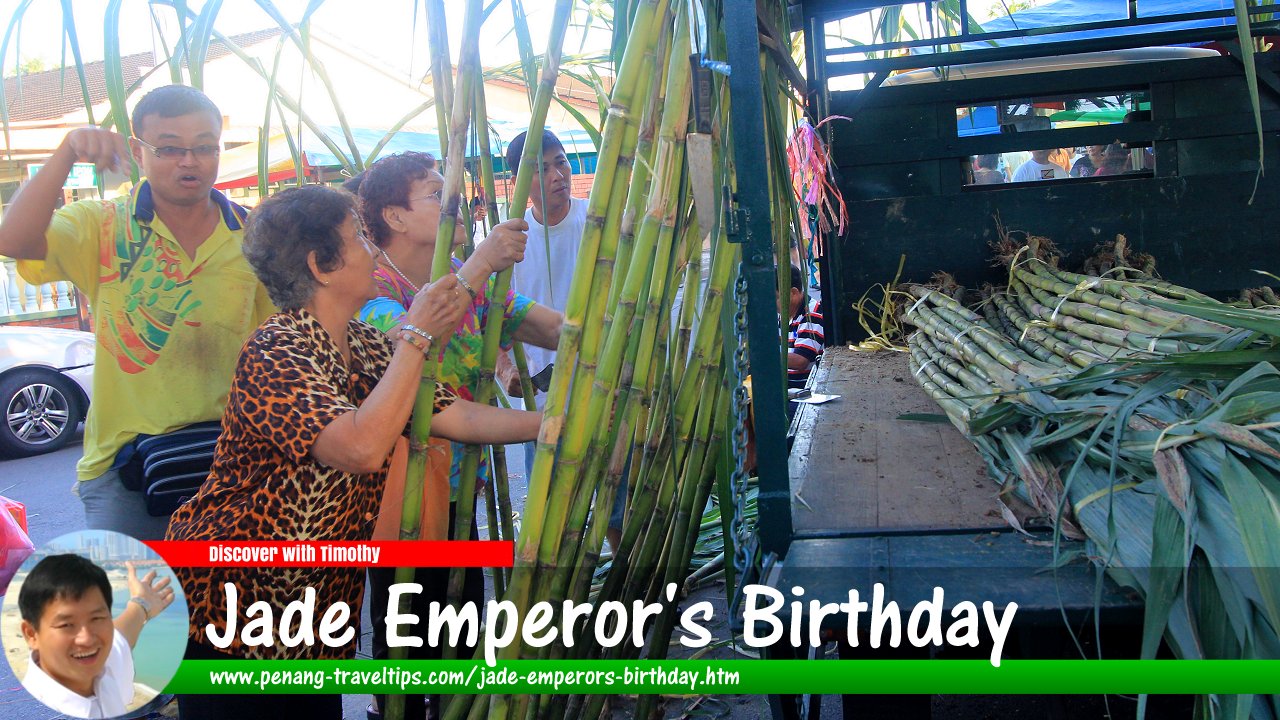 Buying sugarcane for the worship of the Jade Emperor (16 February 2013)
Buying sugarcane for the worship of the Jade Emperor (16 February 2013)
The Jade Emperor's Birthday is a major celebration among the Hokkien people in Penang. It is known in Hokkien as Thni3 Kong3 Snaeh1 while the rites are known as Pai1 Thni3 Kong1, translates simply as "worshipping the Jade Emperor". In Penang Hokkien, the Jade Emperor (玉皇) is known as Thni3 Kong1 (天公), literally, Lord of the Heaven. He is regarded as the supreme deity in the Taoist pantheon, reigning above all the other Taoist deities, and is in control of all things. Although I am not Taoist, I approach this subject from the historical and cultural perspective to give you an insight into the customs, beliefs and festivals of the Penang Hokkien people.
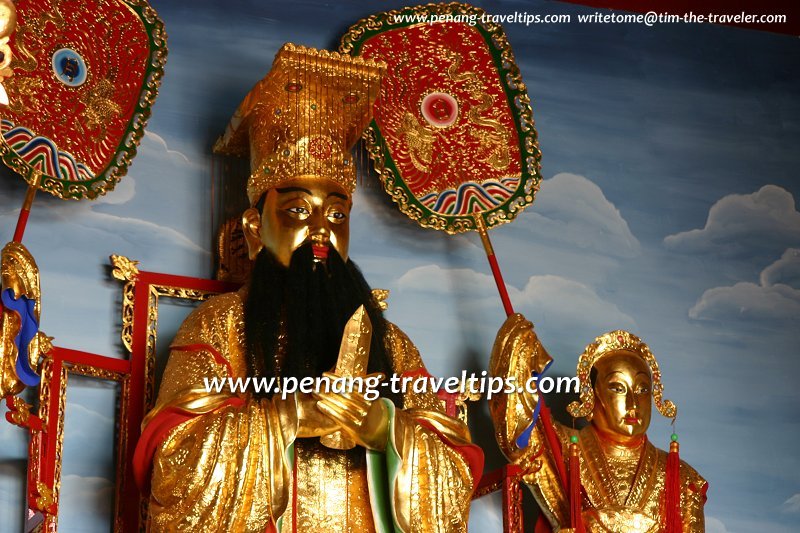 The Jade Emperor effigy at the Jade Emperor Pavilion, Penang (28 January 2006)
The Jade Emperor effigy at the Jade Emperor Pavilion, Penang (28 January 2006)
Various schools of Taoist interpretation place the Jade Emperor as being either an incarnation of the Three Pure Ones (三清), the three highest gods in the Taoist trinity, or ranked below the Three Pure Ones. Most Hokkien people professing the Taoism faith simply regard him as their most important god.
The Jade Emperor's Birthday falls on the 9th Day of Chinese New Year. Due to its significance to the Hokkien people (not only in Penang, but elsewhere too), that day is also known as the Hokkien New Year Day. The rites of worship take place at midnight, mostly in individual homes, hence you will see the Hokkien people, particularly the ladies, busy with the preparations one or two days before the event.
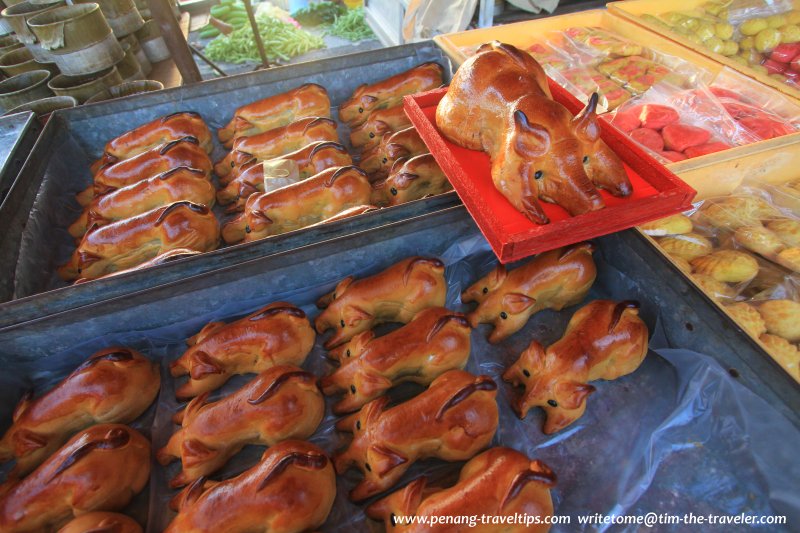 Roasted-pig pastries, for worshipping the Jade Emperor (16 February 2013)
Roasted-pig pastries, for worshipping the Jade Emperor (16 February 2013)
According to Hokkien tradition, time is marked by two-hour blocks. So, midnight encompasses the time block from 11:00 pm to 1:00 am. Technically, the worshippers may start the rites at 11:00 pm, though many nowadays wait until 12:00 sharp.
The grandest temple dedicated to the Jade Emperor in Penang is the Jade Emperor Pavilion. Apart from there, the Jade Emperor's Birthday Celebration is usually held at the grandest scale in the Clan Jetties, which has a high concentration of Taoist shrines, or ang3 kong3 keng1. This is coincidental to there having a high concentration of Hokkien people for the past few generation. However, the Jade Emperor's Birthday has been celebrated in Penang long before the Clan Jetties existed, right from the when the early Hokkiens, known today as the Baba Nyonyas, arrived on Penang Island.
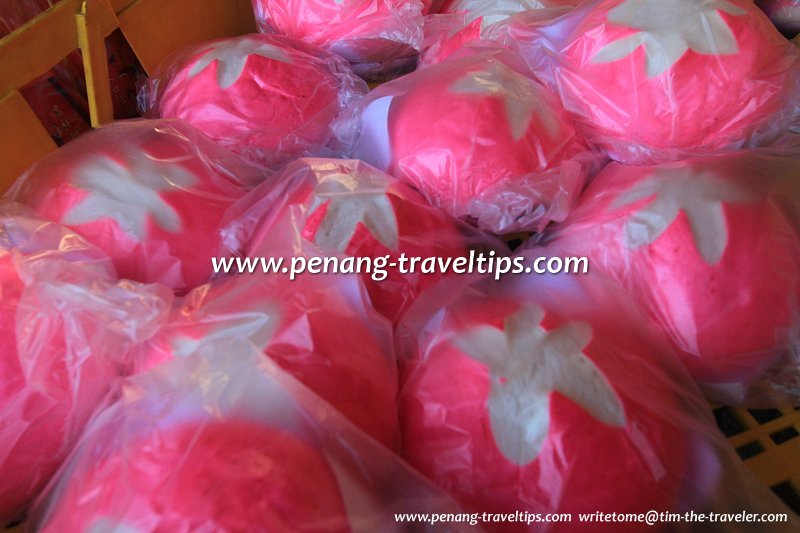 Mee koo for the worship of the Jade Emperor (16 February 2013)
Mee koo for the worship of the Jade Emperor (16 February 2013)
When did the Hokkien start worshipping the Jade Emperor?
According to Professor Ong Seng Huat, this possibly occured in the late Tang Dynasty (618-906 AD), when new settlers from Hunan Province migrated with military escort into Fujian Province. There were skirmishes between the Hokkiens and the newcomers, though eventually the Hokkiens came to accept the newcomers, a byproduct of which was the worship of the Jade Emperor, which was a northern Taoist deity. Whether this is based on historical fact or legend requires further research.In the account, however, there was a mention where the newcomers misunderstood the word "lang", which was "human" (人) in Hokkien, but "wolf" (狼) in the language of the newcomers. As I've mentioned, this may be legend rather than fact, as we have to study whether or not the pronunciation of wolf and human has remained unchanged since the late Tang dynasty. I believe this is a story that was added later, based on the homophone of wolf and human between Hokkien and Mandarin.
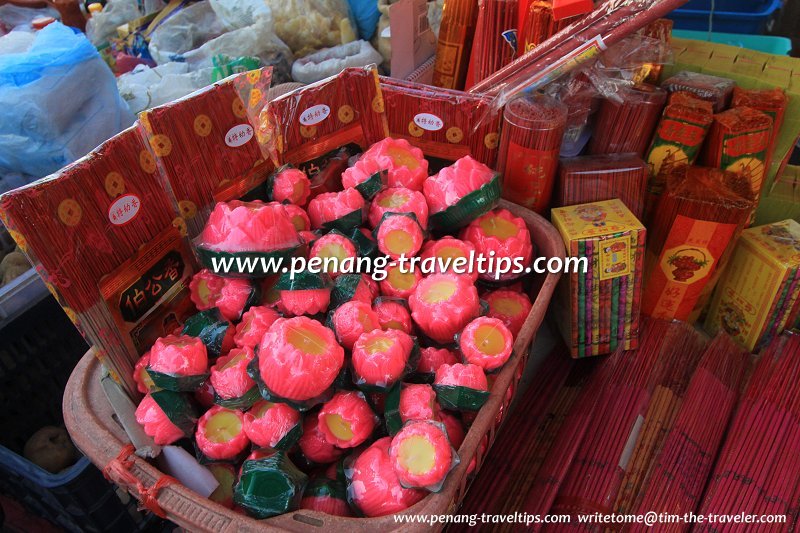 Taoist prayer paraphernalia for the Jade Emperor's Birthday celebration (16 February 2013)
Taoist prayer paraphernalia for the Jade Emperor's Birthday celebration (16 February 2013)
How does a god get a birthday?
Now, how would it be possible for a god to have a birthday? While most of the Taoist deities were deified form of historical personalities, in the case of the Jade Emperor, he appears to have a mythological rather than historical origin.According to Taoism, the Jade Emperor was born to King Jing De and Queen Bao Yue of the Kingdom of Pure Felicity and Majestic Heavenly Lights and Ornaments. He cultivated Tao on the Bright and Fragrant Clifee, attaining Golden Immortality after 1,550 kalpas, of which each kalpa lasted 129,600 years, and became the Jade Emperor after another one hundred million years.
In preparation for the festival, markets do a boisterous business is selling worship paraphernalia as well as gift offerings prepared specially for the occasion. The worship of the Jade Emperor entails specific items, among them Imperial Gold, or Thni3 Kong3 kim1, the only paper money of legal tender in the Jade Emperor's heavenly realm. This is often folded up to take on auspicious shapes, such as that of the pineapple.
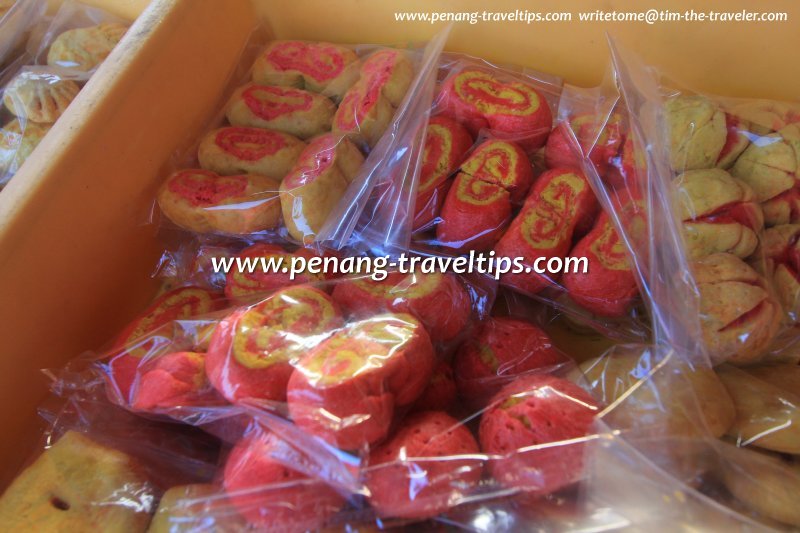 Jade Emperor cookies (16 February 2013)
Jade Emperor cookies (16 February 2013)
Various food items offered to the Jade Emperor carries specific meaning, often based on homophone. For example, the pineapple is offered because its name in Hokkien, ong3 lai2 is homophonous to "heralding auspiciousness".
The offering of sugarcane
Perhaps the most important offering is the sugarcane. There are many folk legends around this offering, the most popular being that the Hokkien people were saved from their enemies when they hid in the sugarcane plantation. As to the identity of the enemies, there are various theories, the more whimsical version said that the Hokkien were held by demonic forces. According to Wikipedia (reference), the Hokkien were attacked by Japanese pirates.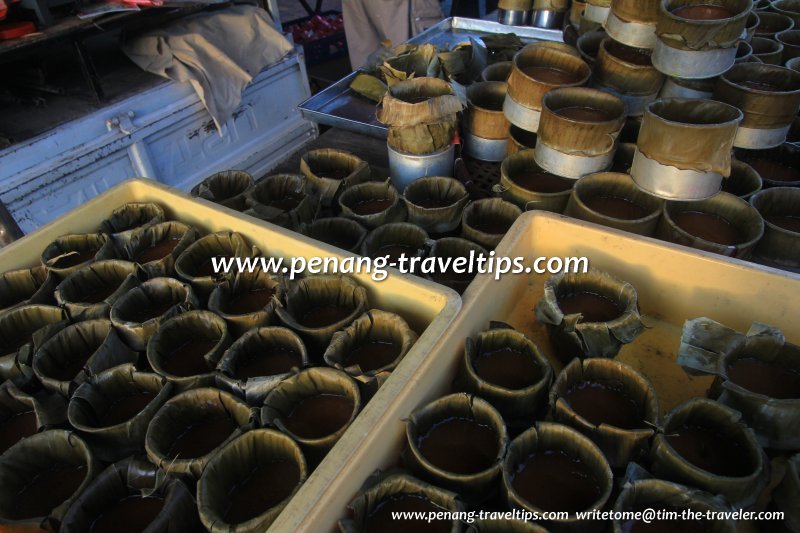 Tnee Koay sold on the occasion of the Jade Emperor's Birthday preparation, Jelutong Market (16 February 2013)
Tnee Koay sold on the occasion of the Jade Emperor's Birthday preparation, Jelutong Market (16 February 2013)
As I examined the history of the Hokkien, I discovered historical evidence to identify the enemy. This is a hypothesis based on Chinese history, in particular, to the second half of the 17th century. (I may appear to be digressing here, but be patient as I'll link it back to the Jade Emperor celebration later.)
1646 was a year of great turbulence for the Hokkiens. The Ming Dynasty had been in decline and was about to collapse at the onslaught from the Manchurians, who were installing the Qing Dynasty across China. Two years before, in 1644, Beijing fell (because the traitor Wu Sangui opened the gates of the Great Wall to let the Manchus in), causing the Chongzhen Emperor to kill all the members of his immediate family (except 16-year-old Princess Chang Ping, who managed to block the sword) and then committing suicide.
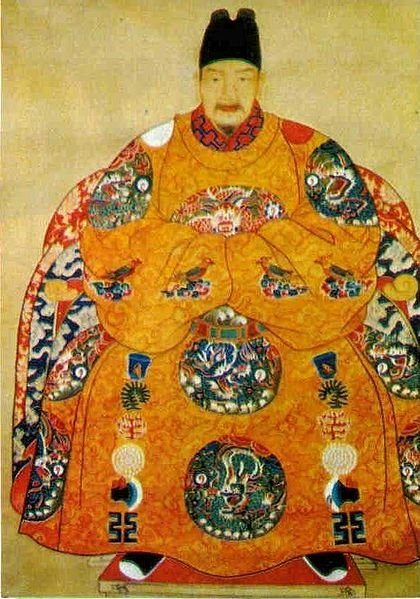 The Chongzhen Emperor, last emperor of the Ming Dynasty
The Chongzhen Emperor, last emperor of the Ming DynastyAuthor: Unknown (public domain)
With the death of the emperor and most of the imperial household, the Ming Dynasty was effectively gone, though a few pretenders attempted to assume the Ming throne, creating what was known as the Southern Ming Dynasty (1644-1662).
The Manchus continued their advance heading south. In 1645 they took Nanjing, forcing the Ming court to flee. In 1646, the Manchus arrived in Fujian Province. They would have easily vanquished the largely peasant Hokkien people, if not for a rebel leader, Zheng Chonggong (鄭成功/郑成功), born Zheng Sen (鄭森/郑森), but known in the West by his title, Koxinga (國姓爺/国姓爷), which means "Lord of the Imperial Surname". In Fujian province a massive battle ensued between the Qing army and Ming loyalists headed by Koxinga.
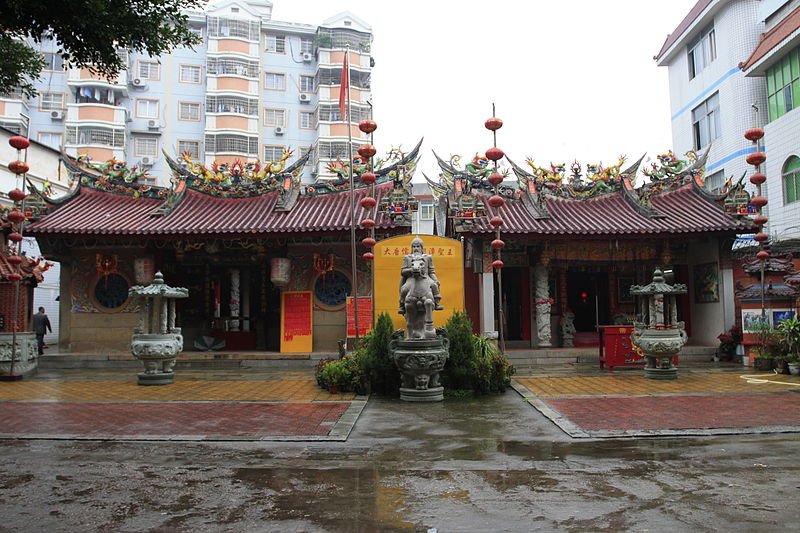 Guanyuan Weihuimiao Temple, Zhangzhou, China
Guanyuan Weihuimiao Temple, Zhangzhou, ChinaAuthor: Zhangzhugang (Creative Commons Attribution 3.0 Unported)
But who were the enemies the Hokkiens were fleeing from? The Hokkiens got caught in the crossfire between the Manchus and the Ming loyalist army headed by Koxinga. It was a situation reminiscent of the Malay saying, Gajah sama gajah berperang, pelanduk mati di tengah (When elephants go to war, the mousedeer die in their midst.)
In circa 1652, there was a massacre in the Hokkien city of Zhangzhou (that's where the early Penang Hokkien people were believed to have originated), caused by the fighting between the two sides. That, I belive, was when the Hokkien sought refuge in the sugarcane plantations.
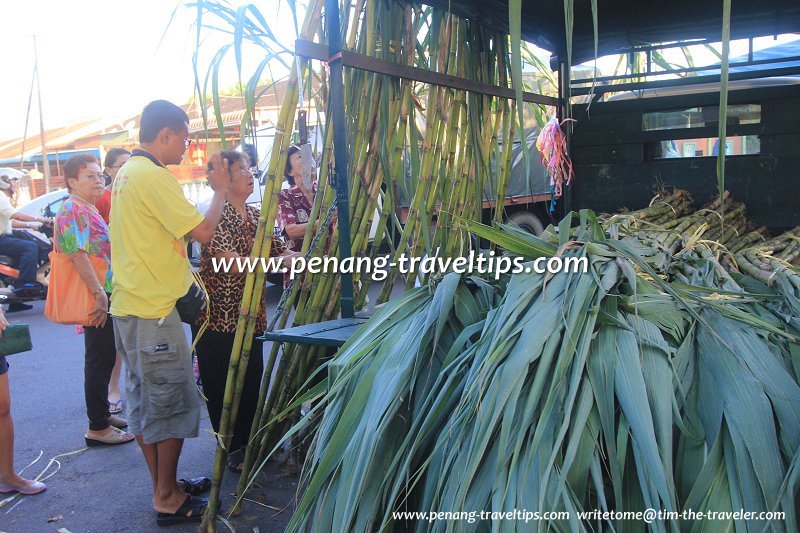 Buying sugarcane for worshipping the Jade Emperor (16 February 2013)
Buying sugarcane for worshipping the Jade Emperor (16 February 2013)
As for the hypothesis of the Hokkiens being attacked by Japanese pirates, Koxinga was a pirate, and he was born in Nagasaki, Japan, so although he and his men were Ming loyalists, they fit the bill of being "Japanese pirates".
The Manchus eventually managed to eject Koxinga from Fujian Province, after which they forced the coastal population of Fujian, Guangdong and Zhejiang provinces to move inland. This, I belief, led to the early migration of Hokkien people out of mainland China, to Taiwan as well as to the Philippines, the Malay peninsula and even Myanmar.
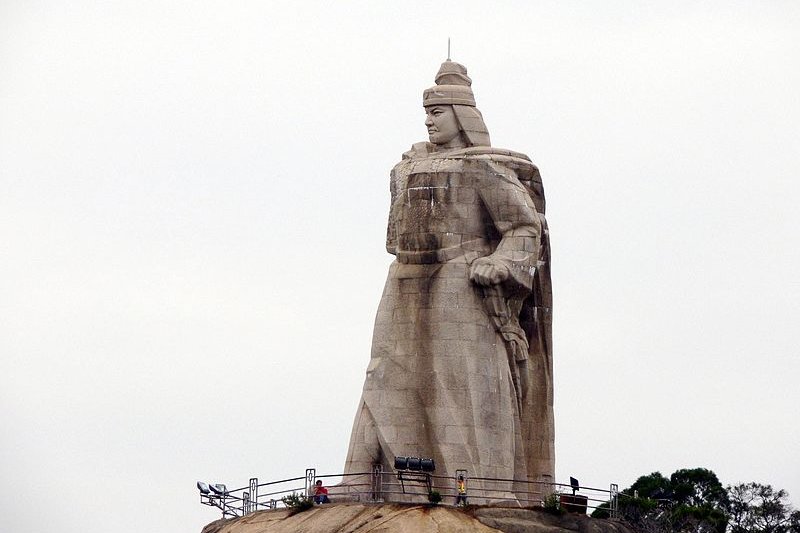 Statue of Koxinga in Gulangyu Island, Xiamen, Fujian Province, China
Statue of Koxinga in Gulangyu Island, Xiamen, Fujian Province, ChinaAuthor: Gisling (Creative Commons Attribution 3.0 Unported)
Although the Hokkiens were forced to leave Fujian Province, they never forgot the incident where the were saved from their enemies (most likely the Manchus) by their decision to hide in the sugarcane plantation. That saved them, and as a result, they annually offer sugarcane (kam3cia3 in Penang Hokkien), which sounds a bit like "thank you" (kam1siah33), as a form of thanksgiving, to their supreme deity, the Jade Emperor.
In addition to sugarcane, a wide range of other foods are also offered. This includes the pink pagoda-shaped candy (ngor siew thng), sweet-sticks (bit chien), pink rice-flour buns (mee koo), and the tortoise-shaped pastries (ang koo, among others. The tnee koay, which is also used as offering to the kitchen god, is also featured on the offering table.
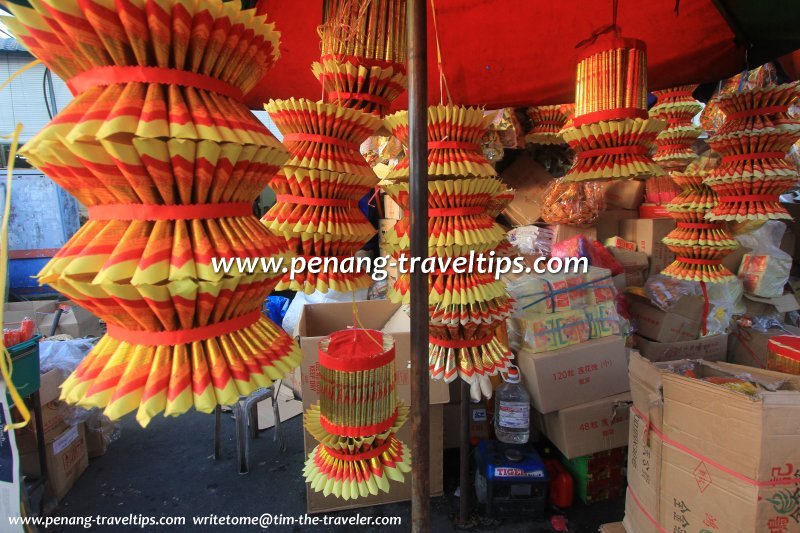 The ang kong kim specially sold for the worship of the Jade Emperor (16 February 2013)
The ang kong kim specially sold for the worship of the Jade Emperor (16 February 2013)
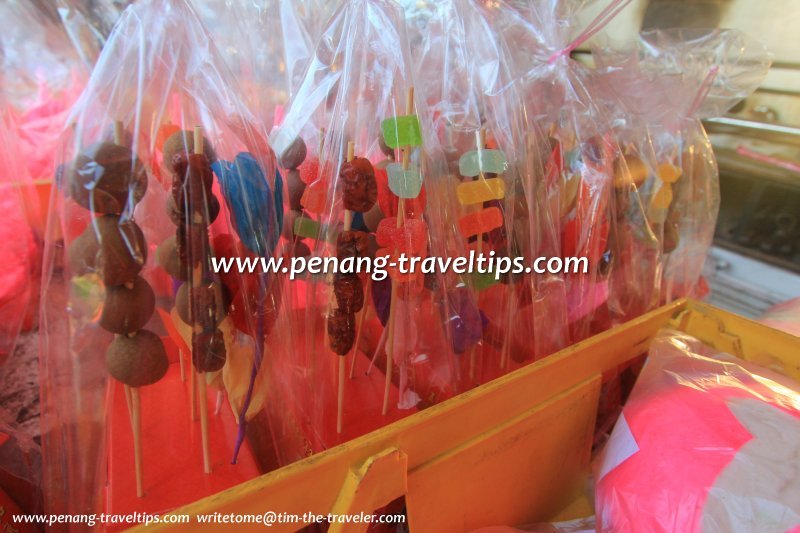 Bit chien (16 February 2013)
Bit chien (16 February 2013)
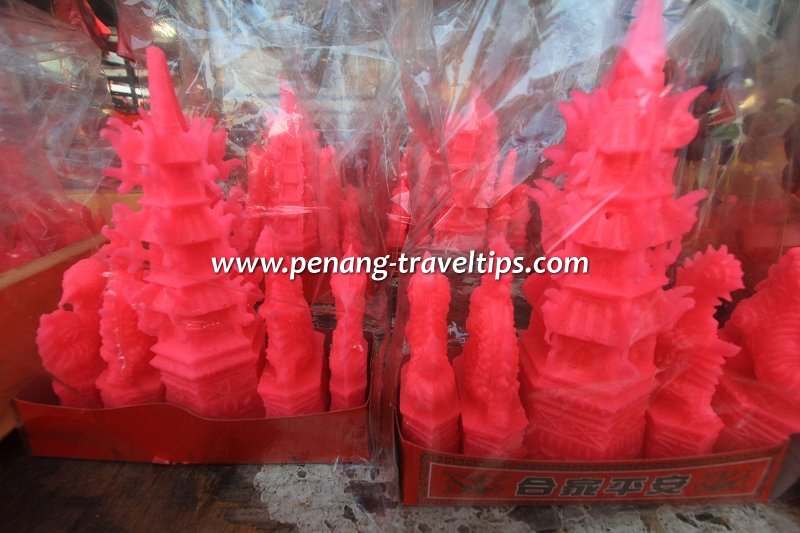 Ngor Siew Thng (16 February 2013)
Ngor Siew Thng (16 February 2013)
Bibliography
- Pulau Pinang Volume 1 No. 2, page 16-17
- Jade Emperor
- Three Pure Ones
- Koxinga
- List of Mind Dynasty emperors
- Chongzhen Emperor
- Zhu Youlang, Prince of Gui
- Wu Sangui
Private Guided Tours of Penang
If you are seeking private guided tours of Penang, message Penang Tour Guides at penangtourguides@gmail.com and enquire with them. Buy, rent or sell properties in Penang
Buy, rent or sell properties in Penang
Do you have a property for sale or to rent out? Are you looking to buy or rent a property? Get in touch with me. WhatsApp me (Timothy Tye) at 012 429 9844, and I will assign one of my property agents to serve you. I will choose the agent for you, according to your property needs. So when you message me, provide me some details of what you need, whether to sell, to buy, to rent or to rent out, and what type of property, is it condo, apartment, house, shop, office or land. Latest updates on Penang Travel Tips
Latest updates on Penang Travel Tips
 Map of Roads in Penang
Map of Roads in Penang
Looking for information on Penang? Use this Map of Roads in Penang to zoom in on information about Penang, brought to you road by road.About this website

Dear visitor, thank you so much for reading this page. My name is Timothy Tye and my hobby is to find out about places, write about them and share the information with you on this website. I have been writing this site since 5 January 2003. Originally (from 2003 until 2009, the site was called AsiaExplorers. I changed the name to Penang Travel Tips in 2009, even though I describe more than just Penang but everywhere I go (I often need to tell people that "Penang Travel Tips" is not just information about Penang, but information written in Penang), especially places in Malaysia and Singapore, and in all the years since 2003, I have described over 20,000 places.
While I try my best to provide you information as accurate as I can get it to be, I do apologize for any errors and for outdated information which I am unaware. Nevertheless, I hope that what I have described here will be useful to you.
To get to know me better, do follow me on Facebook!
Copyright © 2003-2025 Timothy Tye. All Rights Reserved.

 Go Back
Go Back